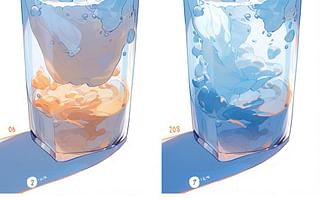🧊 Dry Ice vs Regular Ice: Take Our Interactive Quiz! 🧊
Dry Ice vs Regular Ice: An Interactive Quiz
Test your knowledge about the differences between dry ice and regular ice!
Did you know that the difference between dry ice and regular ice is more than just a matter of temperature? If you've just taken our interactive quiz, you're probably brimming with newfound knowledge about these two forms of frozen matter. Let's delve deeper into the fascinating world of dry ice and regular ice.
Regular ice, as you've learned, is simply frozen water. It's a staple in our everyday lives, from cooling our drinks to preserving our food. But have you ever wondered why regular ice is considered 'wet'? It's because it melts into a liquid, a characteristic that makes it less ideal for certain applications. To learn more about the properties of regular ice, check out our FAQ on the difference between dry ice and wet ice.
Dry ice, on the other hand, is frozen carbon dioxide. Unlike regular ice, it sublimates, meaning it transitions directly from a solid to a gas without passing through a liquid phase. This makes dry ice an excellent choice for keeping items frozen for extended periods. However, it's crucial to store dry ice correctly to ensure its longevity. For a comprehensive guide on buying and storing dry ice, head over to our article on the subject.
Exploring the Uses of Dry Ice
Dry ice isn't just for keeping your perishables cold. Its unique properties make it a fantastic tool for scientific experiments and educational activities. For example, did you know you can make a dry ice bubble or even a homemade comet with dry ice? Discover more fun and educational activities in our article on dry ice experiments.
Understanding the Science Behind Dry Ice
Curious about how dry ice is made? It's a fascinating process that involves pressurizing and cooling carbon dioxide gas. If you're interested in the science behind it, our article on how to make dry ice at home will satisfy your curiosity.
Whether you're a science enthusiast, a teacher, or someone just looking to keep their food cold, understanding the differences between dry ice and regular ice can help you make informed decisions. Remember, safety is paramount when handling dry ice. Always follow the recommended precautions and enjoy the cool benefits of this exceptional substance.




